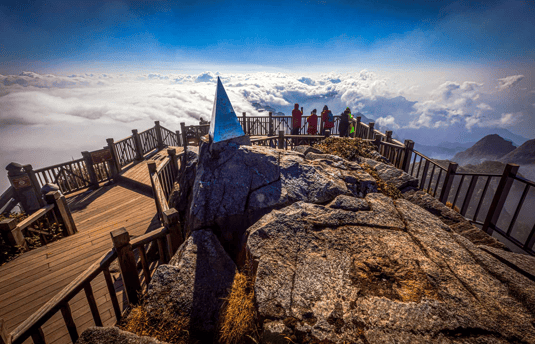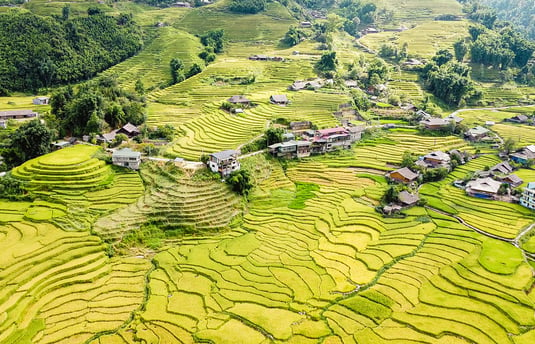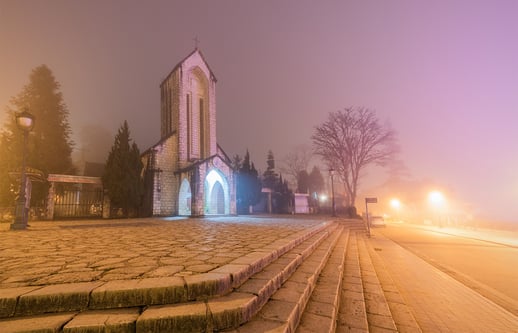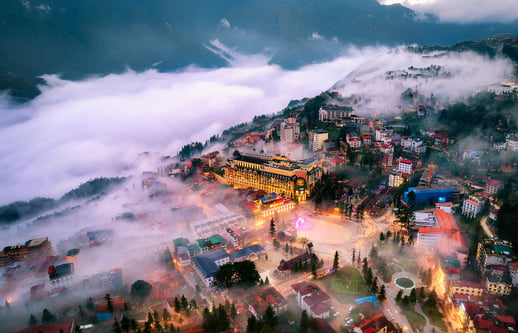Welcome to Addy Travel. Hotline: +84 983 585 189 - Email: info@addytravel.com
Sapa Travel Guide
Nestled in the northern mountains of Vietnam, Sapa is a picturesque town known for its terraced rice fields, towering peaks, and rich cultural diversity. A popular destination for trekkers, nature lovers, and those seeking to immerse themselves in the culture of indigenous hill tribes, Sapa offers a unique experience
TRAVEL GUIDE
12/19/20243 min read


1. Getting There
Sapa is located around 350 km from Hanoi, Vietnam’s capital, closest Airport is Noi Ba airport which is 4,5 hours driving from the airport. While there are multiple ways to get to Sapa, the most common options include:
By Train and Bus: Take a train from Hanoi to Lao Cai (around 8 hours), then a bus or taxi to Sapa (around 1 hour).
By Bus: Several bus companies operate overnight buses from Hanoi to Sapa, with travel times around 5-6 hours.
By Car: Renting a car is an option for those preferring a private, direct route to Sapa, though it is more convenient and privacy.
2. Best Time to Visit
The best time to visit Sapa is during the months of May or August and less rain from October to Marc but it may very cold and foggy, when the weather is cooler and more comfortable. The rice terraces are most spectacular in late May to early June and end of August to Beginning of September is harvesting season.
3. Things to Do in Sapa
Trekking in the Mountains: Sapa is known for its trekking opportunities. Explore the stunning rice terraces and visit villages like Cat Cat, Ta Van, and Lao Chai. These treks can be customized for different levels of difficulty and can last anywhere from a few hours to several days.
Fansipan Mountain: Known as the "Roof of Indochina," Fansipan is the highest peak in Vietnam, standing at 3,143 meters. Hike or take the cable car to the top for breathtaking panoramic views.
Visit the Local Villages: Sapa is home to several ethnic minority groups, including the H'mong, Tay, and Dao people. Visiting their villages is a great way to learn about their cultures and traditions. The market in Sapa Town is a good place to interact with locals and purchase unique handicrafts.
Love Waterfall: A short drive from Sapa Town, the Love Waterfall is surrounded by dense forests and offers a refreshing retreat. It's also a great spot for photos.
Sapa Lake: Located in the heart of the town, Sapa Lake is a peaceful place to relax and enjoy the surrounding natural beauty. You can also visit the nearby Sapa Stone Church.
5. What to Eat
Sapa's cuisine is influenced by the region's ethnic groups and the abundance of fresh, local ingredients. Some dishes you should try include:
BBQ: Sapa is known for its delicious grilled BBQ, especially skewers of marinated meat like pork and chicken, which are often cooked over an open flame.
Mountain Pork: A local specialty, mountain pork is known for its tender texture and rich flavor, often served grilled or in stews.
Chicken: The region’s free-range chicken, which is more flavorful and tender than factory-farmed chicken, is commonly served grilled or in hearty soups.
Salmon Fish: Sapa's cool climate is ideal for farming salmon. The fresh salmon, often grilled or served in hotpots, is a must-try dish.
Sturgeon Fish: Another local fish delicacy, sturgeon is often grilled, fried, or served in soup, offering a rich, delicate flavor.
Sapa Hotpot: A flavorful hotpot filled with fresh vegetables, meats, and herbs, perfect for chilly evenings in Sapa.
4. Where to Stay
Sapa offers a wide range of accommodations, from budget guesthouses to luxury resorts. Some popular options include:
Topas Ecolodge: A luxurious resort set among the mountains with stunning views and eco-friendly accommodations.
Hotel de la Coupole Sapa - MGallery Collection: is a hotel located in Sapa, Vietnam. It is part of the Mgallery Collection of hotels, which is a brand of Accor. The hotel is located in the heart of Sapa, near the town square and the market. It offers a variety of amenities, including a spa, a fitness center, an indoor pool, and a rooftop bar. The hotel also has a restaurant that serves international and local cuisine.
Pistachio Sapa Hotel: A mid-range hotel with excellent views of the town and mountains.
Homestays: For a more authentic experience, consider staying with a local family in one of the surrounding villages. This is a great way to learn about the local culture and traditions.
6. Shopping and Souvenirs
Sapa is a great place to pick up souvenirs, especially handmade textiles, jewelry, and accessories crafted by local ethnic minorities. The Sapa Market offers a wide variety of goods, including colorful textiles, silver jewelry, and traditional clothing.
7. Tips for Travelers
Weather: Sapa's weather can be unpredictable. Always bring warm clothes, especially if you're visiting in the cooler months, and be prepared for rain.
Cash: While there are ATMs in Sapa Town, it’s best to carry cash with you, especially when visiting remote villages where credit cards aren’t accepted.
Trekking Safety: If you plan on trekking, always hire a local guide to ensure safety and to enrich your experience with local insights.
Sapa is a unique destination where nature, culture, and adventure come together. Whether you’re trekking the rugged mountains, immersing yourself in local culture, or simply relaxing and enjoying the scenery, there’s something for everyone in this northern paradise. Make sure to pack well and prepare for an unforgettable adventure!








Connect with us
Experience authentic Vietnam with personalized travel journeys.
Contact us
Sign up for the best offer
Email: info@addytravel.com
Hotline: +84-983 585 189
© 2024. All rights reserved by Addy Travel
